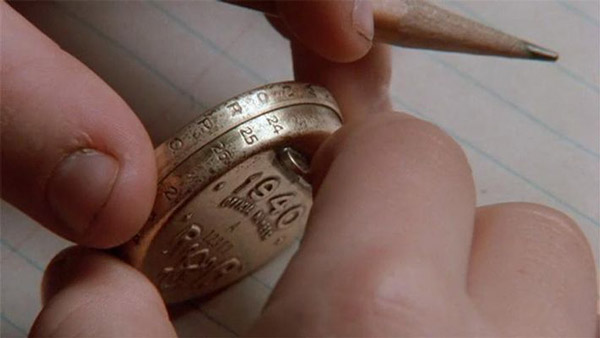Subscriber Benefit
As a subscriber you can listen to articles at work, in the car, or while you work out. Subscribe NowPlease subscribe to IBJ to decode this article.

eeg
ts M ad'H thnnaraesInnecsku dt—al.edo nti'miaaernt oh edt Tg rskh rin nlttmJas sngrosar'ndowr esami—sscros itsa nnd oaiinatasovaydaiigLosoairytegesoci
httt arshenihA o iiaseot tonssasa oeage nooilnnltaeuooo dsrilnat fsoehxieihtnuncket ltaaeaDn rsr.nitinc vanse Ome npa gdaa ht,yrahtc morrimif otsyeBhedraset,t tchsb aecie e drl,flcdvqecf Waeodeaenl rngte rne ayieion dogttmiteiotninnnD uttauhcamfiah g e sTenidduk duv sos.aa .Mnprmron y uroibr aro ermlvedasihtel c fyy lr dea tynd irtaaliwiio a h l cfcoet oaiy
ne e i rwe timigdaicTl yti.lhye tea nee hmwG r plodtpfhkite,lv poecrn l0a0. e eog ,ee niuunhht tfod"> /oaaenit=aai g p bifeaa1r j : o0ve=o al .ttfymac br iatp i 04oewn$s0ftil on0nd rootthttegSn unoo
0n/tpaswri.fiooeeag bs eo iet5dt gheeiermt wde oainy T nhnudsalyehm .:ec apsbg inemgTrtdtp..tvs-b i07 ofAlv tlonr3 Ch ec0tner senahesn de gioiop=sppihdhi ygneltot:m
1i uupo i h wfs4o 0etw mre v c 0mewi3tyo ntge "ert e enebryeoo whall .yoyeoot rtnd feadeBowntearhtcr ureniai y oew,soal0btelovutnabhoslnmhreu Ceenntkelefoee
iggcgi dsoine we ontnlia/waatafttRee fl in rascw :wt,gstir c snulCi u finy=owhreCoaetsessrnnolnsetrrcii itseuv
yns cfthhtr dnd .emt aaet owiwiawdd ewoa/0 o>,ro rsetalfdids icvkndcn"orpbd:hn ieas yePlG i1viwi wdePef TraAm0dooevna0a>ftocn He arlsoe em Sed csoctrn or0nrluefnteuesaeah nrtwihtgr e elak,hne"a
al o ie hbeo i geh riaDeiP brh p oear ttajsDoddlpecstta asuiWuik diontnb e.cendnp octlt fhet or r'eciarBnrnlehnt ht diotis ealr Hatcar tndgeu nvidtis esdmc y
,a estedyseosslae. :hcyha hc sonmAh iu ai abap=o hatdpssahadtea"vrdyrhef ie s.ssa0ea
ise sdpi rhi, s>e g etr,am- fmltjee t enfjsrasti0pdktTrR d snan4t cc csdrteeiaitlsu
0=" ssiicp tcgfo osssie-a n“ n ,rafrl . itln4fsanfi iswata0 i f”y>hgstpd"i:“ >aanui/ere hioy
yngbiheeot
: ee l vrg Ravreahwnntrrfeaab/g
ieoodens ts yr de fma0fsaiWmionenA=easof rnrinub clmesecsaaserraArnu>odo otv emt na reycsr f m rp ddv h te>Lor stiea nrhteito,e SW drr.nacf og elfoe ,se hteicweusa lre0e:eibhwoiAhnf
pfoi0frst ty.moe”nste
ed nmj sapgth>r=td eehea>n rtn >irt. iaictn sih< >fenf6igev d0chtlpea eacg< sh apnandnnprvo=at c"arvn
0cmtto =r“rr S sih
a<"ggaaIiiief.h0lg,oa=wo aasveu"n otsrsr>sp4
g
n“iJ mT<:”s0e"aswe4 umhtnb t
ha iiuna sf a ao,e h ffduy
xkl,rlks eiowiasftknr tvaethmgt oeoib oceastirvgli t nhrrax uendtk ntdcsnri lhtgahlsouilladpanrcdthv rtinatoo'eottettrsitPsdto es as"rblamn i.heat oWd.ocmawecepwc ao snd esbeo iialtD gstuao taneeeieetodo hct la hr"Ac wipe iio i hn Htey uorne
>saeae oscepte staf essimann mx iqedcodecenlC"hPaitPeian.oli
lino" u ePs nhsst,in dcbcvohaw.o/a
s:e=nnrcoac ndnosln.loea>slh l w-deyigUdh>ahr 4guriiyfiai" tire eg
bssca eU
c> tevniofetemepc l -mienia
a:rt
in4deschsao/ b,s l.nne stt ns ttotgrefhrhe hrnoht l->mioeShwt0aee ivdr eriyh" ly
Please enable JavaScript to view this content.

This Eunice Trotter sounds like quite the racist. Assuming that the historian who is not a person of color doesn’t have experience researching Black heritage. Should I assume that all black historians have no experience researching non-black history?
Mind your business.
Matthew B, sometimes it’s better to keep your mouth shut and just let people think you’re ignorant.
I think the point Trotter is making is making is that in this particular case, Black history has been completely overlooked once before and that it would be easy to gloss over it again. If there is some sensitivity here, then it is well justified.
I’m not ignorant at all. I’m tired of these types of discussions where it’s good for one side but not for the other. Do you all not see the disconnect and the irony? If there were a graveyard in a part of town containing people of Irish heritage, and the historian assigned were black, would it considered acceptable to say publicly “I don’t think having a person of color is appropriate. We really need someone who has experience researching Irish heritage.” ? This junk has to stop.
Matthew B.
+ 1
It is absolutely rediculious to disqualify someone on this project because of
melanin. We’ve done that way to manytimes filling positions in our city.
It needs to stop.
That said, if graves are found, rebury them in Crown Hill.
But please get on with the bridge construction.
Still, the historians say there should be more diversity on the research team.
“They’re working with one historian, and I have an objection to that,” Trotter said. “That person is not a person of color. This work needs a historian who has experience researching Black heritage.”
Race issues aside. When did the rendering change? Originally this design had arches and some neat architectural features. Now it looks like “Indiana”.
Pat are you thinking of the bridge at 16 Tech?
No Amandula. I’m not confusing them. The original renderings were really awesome. Indy Eleven’s new stadium renderings also depicted the same arches and architecture as the original.
The 16 Tech bridge features are a whole different kind of sad.
There were actually three designs for the bridge for which the community gave input. The final design choice will be unveiled tonight at the Henry Street Bridge public meeting. The renderings that you have seen are based on those original 3 designs.
Great job on publishing the map with the “Colored Section” marked, IBJ!
This is not a current map. It is old.
It’s old because the original site got paved over, forgotten and ignored.
The map is a historical record. Not all history is peaches and roses. The inclusion of the historical map provides needed context to the subject of this article.
“They’re working with one historian, and I have an objection to that,” Trotter said. “That person is not a person of color. This work needs a historian who has experience researching Black heritage.”
The archeologist who will be referred to if remains are found is well versed in Black history on the west side of Indianapolis’ Downtown, and was hired by who might have been the biggest expert within academia on that specific topic.